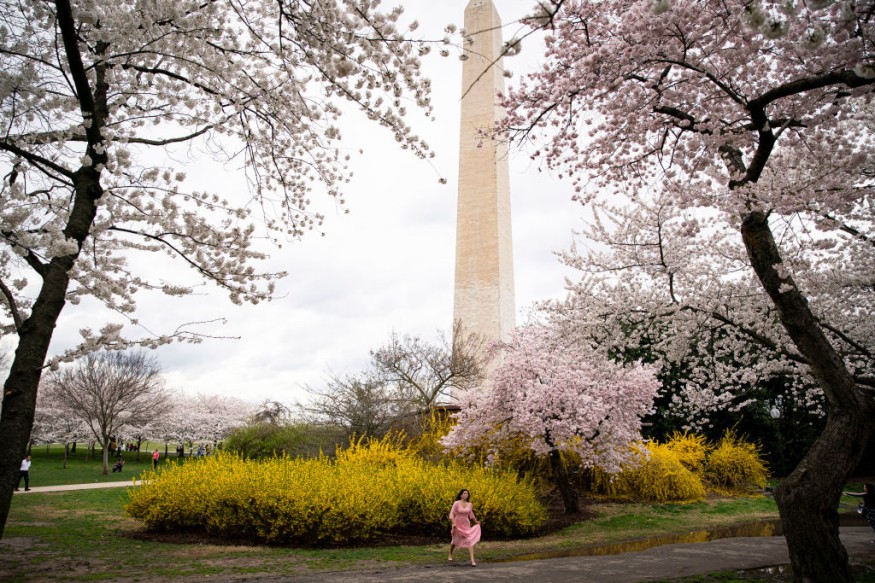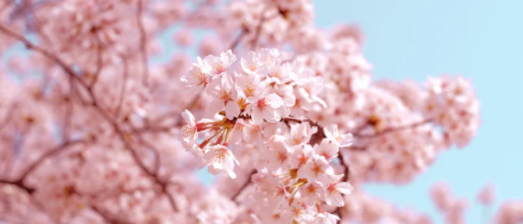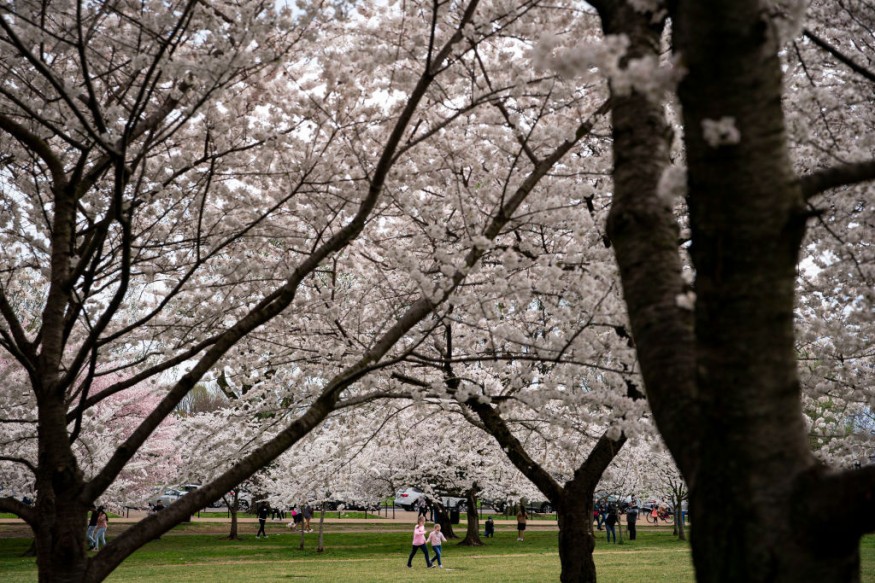Since the city's cherry blossom trees reached full bloom last week, canopies of pink and white flowers have blanketed Washington, D.C.

The first cherry trees in Washington, D.C., were a gift from Japan in 1912. This year's peak flowering of cherry trees in Kyoto, Japan, was the earliest on record in 1,200 years. Since the 1800s, there has been a trend of earlier and earlier blooms. According to The Washington Post, this year's blossoms in D.C. peaked several days ahead of the 30-year average.
Scientists note that the blooms are just one symptom of a larger climate problem on the horizon; early blooms may mean colder spring temperatures.
Responding to Warmer Weathers
Plants and insects can react to rising temperatures at different ways, throwing their life cycles out of whack. Flowers may bloom before insects are ready and vice versa, indicating that insects may not find enough food to eat from the plants, and the plants may not have enough pollinators (to reproduce).
Related Article : Rare $480-Worth Chinese Medicine Plant Learns to Hide From Humans
Regular Blooming Time

According to Naoko Abe, author of The Sakura Fascination, cherry trees deserve a full month of cool weather below 41 degrees to fully blossom when the weather warms up. They bloom later if they don't have the cold air, Abe says, so "they can't wake up properly."
"I believe the influence of climate change is undeniable," Abe says on NPR's All Things Considered. "However, the winter weather is the deciding factor for cherry blossoms."
Although warm springs induce early blooms, delayed blooms may result from warmer winters, which is also concerning. Any of these delayed blooms have already occurred in southern Japan.
According to Abe, if winter temperatures begin to increase, the delays will become so severe the trees will not blossom at all.
Yoshino cherry trees, which account for roughly 70% of all cherry trees in Japan, were planted in Washington, D.C. They're simple to grow and can bloom in as little as five years.
Yoshinos, however, are very sensitive to temperature changes and illness. Abe warns that unless we start diversifying cherry tree varieties now, we might not have cherry blossoms at all times of the year in a century.
Other Cherry Blossom Species
Other cherry species have been forgotten and endangered in Japan since Yoshinos became common in the 19th century.
She said, "We have to discourage that, and we will prevent that." "We have to change our mindset and realize that the Yoshino cherries aren't the only cherries."
Risk of Extinction

According to Theresa Crimmins, assistant director of the USA National Phenology Network in Tucson, Ariz., "the general reaction of plants is to experience the onset of their springtime seasonal activity earlier in the year, too" in several temperate areas of the world where there are long-term patterns toward warmer winters and earlier heating in the spring. She did point out, though, that not all animals evolve at the same rate or in the same direction.
Disruptions of plant and pollinator behavior, which have evolved over centuries to be coincident, are among the most apparent implications of these changes, she said.
For more news about rare plant species, don't forget to follow Nature World News!
© 2025 NatureWorldNews.com All rights reserved. Do not reproduce without permission.





